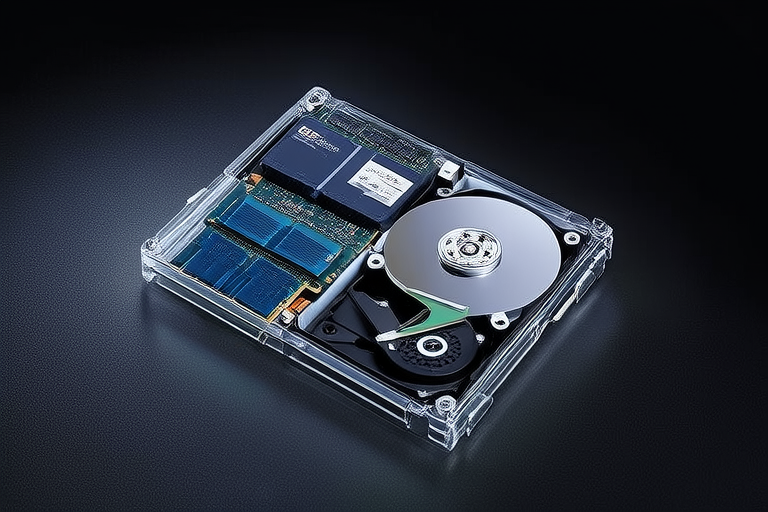“`html
Maximizing Storage Performance with SSDs vs. HDDs: Which is Best?
Introduction
In the realm of computing, storage devices play a crucial role in ensuring efficient data management and retrieval. The choice of storage solution can significantly impact the overall performance of a system, affecting everything from boot times to application loading speeds. Two primary types of storage devices dominate the market today: solid-state drives (SSDs) and hard disk drives (HDDs). Each offers distinct advantages and trade-offs, making it essential to understand their characteristics before deciding which is best suited for your needs.
This article aims to provide a comprehensive comparison of SSDs and HDDs, focusing on their performance metrics, optimization strategies, and suitability for various use cases. By the end of this discussion, you will have a clearer understanding of how to maximize storage performance based on your specific requirements.
Understanding SSDs and HDDs
What Are SSDs and HDDs?
SSDs: Solid-State Drives (SSDs) utilize NAND flash memory to store data. Unlike traditional HDDs, SSDs have no moving parts, relying instead on electronic circuits to read and write data. This design makes them faster, quieter, and more durable.
HDDs: Hard Disk Drives (HDDs) use magnetic platters and a mechanical arm with a read/write head to access data. These components spin at high speeds, allowing for data retrieval but also introducing mechanical limitations and noise.
Key Differences in Technology
The fundamental difference lies in the underlying technology. SSDs use NAND flash memory, which allows for much faster read/write operations compared to the mechanical processes employed by HDDs. SSDs are generally more resistant to physical shocks and operate silently, whereas HDDs are prone to failure due to mechanical wear and tear and can be noisy during operation.
Advantages and Disadvantages
- SSDs:
- Speed: SSDs offer significantly faster read/write speeds and lower latency.
- Durability: They are more resistant to physical damage due to the absence of moving parts.
- Power Consumption: Lower power usage compared to HDDs.
- Cost: Generally more expensive per gigabyte than HDDs.
- HDDs:
- Cost: Cheaper per gigabyte, making them ideal for large storage capacities.
- Capacity: Can offer higher storage capacities at a lower cost.
- Speed: Slower read/write speeds and higher latency.
- Durability: More susceptible to physical damage due to moving parts.
Performance Metrics
Common Performance Metrics
Several metrics are used to evaluate the performance of storage devices:
- Read/Write Speeds: The rate at which data can be read from or written to the drive.
- Latency: The time taken for the drive to locate and access the requested data.
- Throughput: The amount of data transferred per second.
Comparative Analysis
SSDs: SSDs typically offer read/write speeds ranging from 500 MB/s to over 3,500 MB/s, with negligible latency. Their superior performance is evident in tasks like booting up a computer, launching applications, and gaming.
HDDs: HDDs generally provide read/write speeds around 50-200 MB/s, with higher latency. While they excel in bulk storage, their slower performance can be a bottleneck in demanding applications.
Real-World Scenarios
In scenarios such as booting up a computer, SSDs can reduce startup times from several minutes to just seconds. Loading applications and games also benefits greatly from SSDs, providing smoother and faster experiences.
Maximizing Performance
Optimization Strategies for SSDs
To get the most out of SSDs, consider the following:
- TRIM: Enable the TRIM command to help maintain optimal performance by removing invalid data blocks.
- Overprovisioning: Allocate extra space for wear leveling and improved performance.
- Firmware Updates: Keep your SSD’s firmware updated to leverage the latest improvements.
Optimization Strategies for HDDs
For HDDs, focus on:
- Defragmentation: Regularly defragment the drive to ensure contiguous file placement.
- Maintenance Schedules: Schedule routine checks and maintenance to prevent failures.
- Data Placement: Place frequently accessed data on faster sections of the drive to improve performance.
Potential Bottlenecks and Mitigation
Bottlenecks can arise from factors like insufficient bandwidth, outdated controllers, or poor cooling. To mitigate these issues:
- Ensure your system has sufficient bandwidth for data transfer.
- Upgrade to modern controllers and interfaces (e.g., NVMe).
- Implement adequate cooling solutions to prevent overheating.
Use Cases and Recommendations
Analyzing Specific Use Cases
Personal Computers: For general use, an SSD is recommended for faster boot times and application loading. If large storage capacity is needed, consider pairing an SSD with an HDD.
Servers and Data Centers: SSDs offer better performance for high-demand applications, while HDDs remain a cost-effective option for archival storage.
Gaming Systems: SSDs enhance game load times and overall performance, making them ideal for gaming enthusiasts.
Recommendations Based on User Needs
When choosing between SSDs and HDDs, consider:
- Budget: HDDs are more affordable for large storage needs.
- Performance Requirements: SSDs provide superior performance for critical tasks.
- Longevity: Both SSDs and HDDs have their own lifespans, with SSDs generally lasting longer without mechanical wear.
Emerging Trends and Technologies
Advancements like NVMe SSDs and cloud-based storage solutions are reshaping the landscape. NVMe SSDs offer even faster speeds through direct PCIe connections, while cloud storage provides scalable and flexible solutions for businesses.
Conclusion
In summary, the choice between SSDs and HDDs depends on your specific needs and use case. SSDs excel in speed, durability, and power efficiency, making them ideal for performance-critical applications. Meanwhile, HDDs offer cost-effective large-capacity storage, suitable for less demanding tasks.
Selecting the appropriate storage device requires careful consideration of factors such as budget, performance requirements, and longevity. By understanding the strengths and weaknesses of each option, you can make an informed decision that maximizes storage performance for your system.
“`


